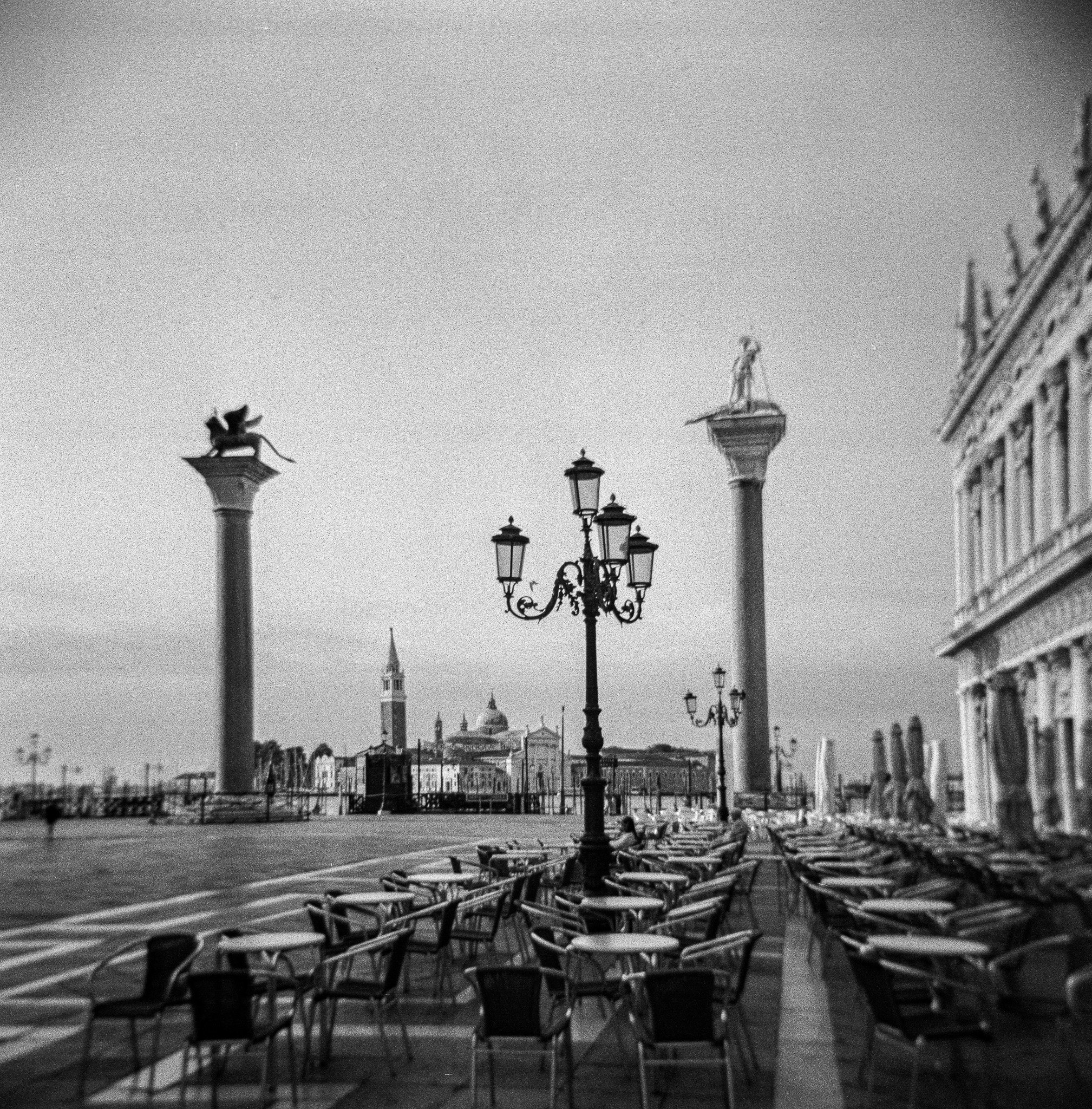In Praise of Imperfection
Words and Images by Kevin Rabalais
“But in each pause we heard the call.”
—Ralph Waldo Emerson
I.
I stumbled on it by chance. Near Wenceslas Square, during an afternoon of aimless walking around Prague, the plaque commemorating Rainer Maria Rilke’s childhood residence reminded me of a story I had read several weeks before. While working as secretary to Auguste Rodin, Rilke confessed that he had lost the ability to write. Believing, instead, that Rilke had lost the ability to see—to look without flinching, always as though for the first time, that prerequisite for any artist—Rodin suggested that Rilke visit the Paris Zoo each day. Once there, he should look at one animal—look, that is, until he truly saw it. Rilke took the sculptor’s advice. He began writing poems about a panther. Later, after an intense encounter with the work of Cézanne, the poet wrote, “Suddenly one has the right eyes.”
II.
After seven weeks of traveling, I arrived at last in Venice. I carried the toy camera the whole time, but I brought it—indeed, bought it—with Venice in mind. “[A]s long as this place exists … Kodak shares are the best investment,” writes Joseph Brodsky in Watermark, his love letter to a city that makes photographers believe they’re the love child of Henri Cartier-Bresson and Sally Mann. The roll of gaffer’s tape that I carried to seal the plastic parts from leaking light weighed more than the camera and cost about the same. But there are a few things that I’ve come to admire about the Holga, a medium format toy camera whose plastic lens has four focal length settings, each marked with an icon, including—who couldn’t love this!—parents holding a child’s hands. And this: In an era when many photographers evaluate images on pixels and sharpness, the Holga motto—“Imperfection is beauty”—resounds for me like a coup de foudre.
Here are a few other things I love about the camera: You can buy one for about $40; Bartleybyesque, it prefers not to capture razor sharp images and, therefore, tends to make “real” photographers scoff. Set to square ratio, you get twelve frames per roll of film—twelve opportunities to slow down and think, twelve chances to see. For anyone used to DSLR cameras with rapid burst shooting of ten, twenty, or more frames per second, that detail—twelve frames, total?—can sound like a mistranslation. Others hear in it permission to slow down; turn from the possibilities that modern technology permits; give your brain time to rewire itself. Rather than wait to see later, think and see now. Another thing: Nobody wants to get caught ripping a yard’s worth of gaffer’s tape from a flimsy plastic toy amid the singular elegance (is that Venetian really wearing a mustard yellow linen suit with a pink scarf in 80% humidity?) of Piazza San Marco.
III.
When he was teaching in American colleges, Joseph Brodsky liked to spend his winter breaks in Venice. In Watermark, the book he published two years after receiving the Nobel Prize for Literature, Brodsky refers to the city—La Serenissima, the most serene—as “a work of art, the greatest masterpiece our species produced.” Who wants to argue with Brodsky? Venice taught him, as it has taught many, the art of slowing down, how to reacquire the ability to see what the rush of contemporary life fools us into overlooking—all those ephemeral distractions in the non-Venetian world.
IV. Reflections from Watermark by Joseph Brodsky
““[T]he only thing that could beat this city of water would be a city built in the air.””
““As the world goes, this city is the eye’s beloved. After it, everything is a letdown.””
“In the end, there’s always this city. As long as it exists, I don’t believe that I, or for that matter, anyone, can be mesmerized or blinded by romantic tragedy.”
“Perhaps art is simply an organism’s reaction against its retentive limitations. At any rate, you obey the command and grab your camera, supplementing both your brain cells and your pupil.”
“The surrounding beauty is such that one instantly conceives of an incoherent animal desire to match it, to be on par. This has nothing to do with vanity or with the natural surplus of mirrors here, the main one being the very water. It is simply that the city offers bipeds a notion of visual superiority absent in their natural lairs, in their habitual surroundings.”






